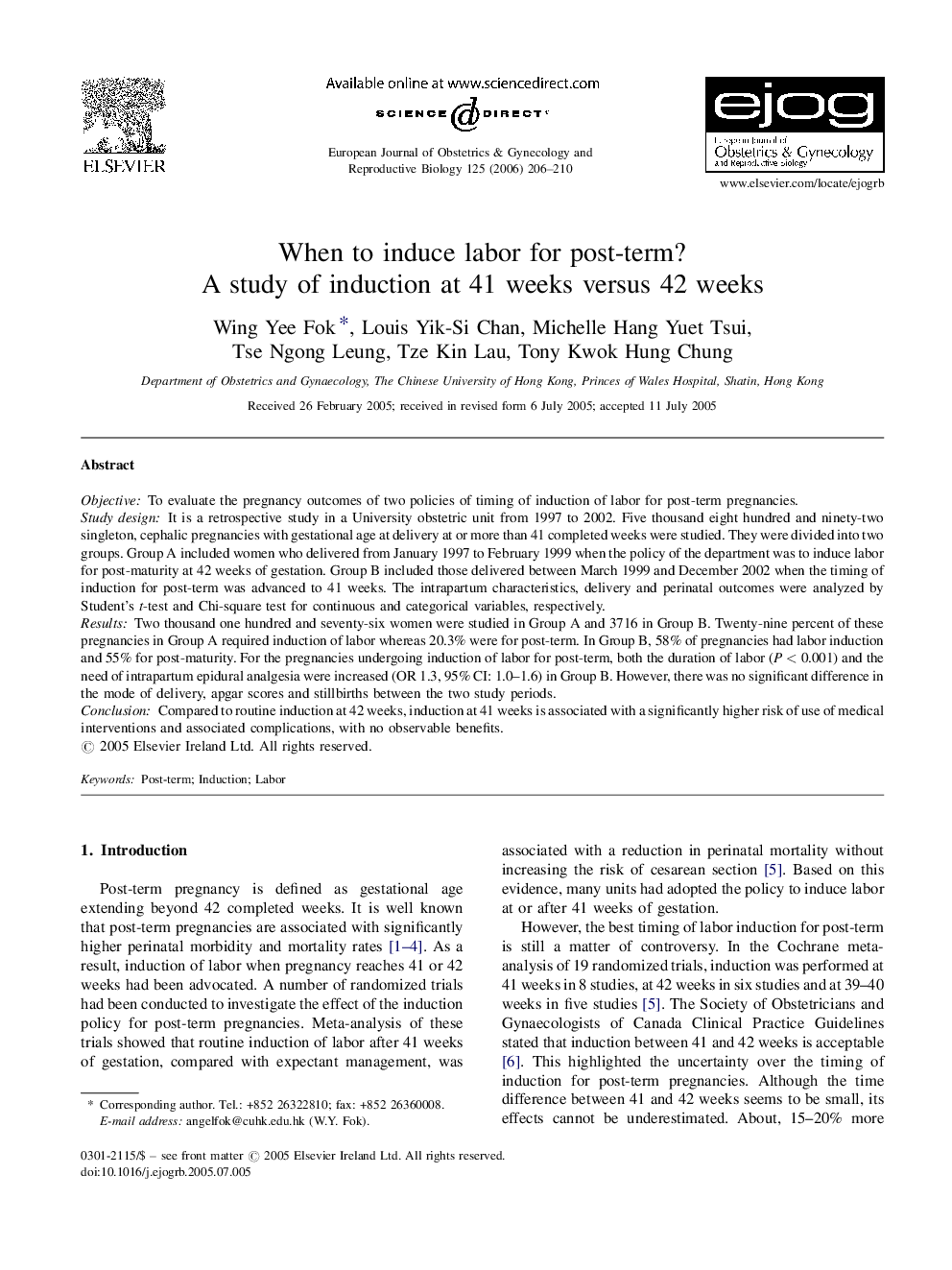| Article ID | Journal | Published Year | Pages | File Type |
|---|---|---|---|---|
| 3922520 | European Journal of Obstetrics & Gynecology and Reproductive Biology | 2006 | 5 Pages |
ObjectiveTo evaluate the pregnancy outcomes of two policies of timing of induction of labor for post-term pregnancies.Study designIt is a retrospective study in a University obstetric unit from 1997 to 2002. Five thousand eight hundred and ninety-two singleton, cephalic pregnancies with gestational age at delivery at or more than 41 completed weeks were studied. They were divided into two groups. Group A included women who delivered from January 1997 to February 1999 when the policy of the department was to induce labor for post-maturity at 42 weeks of gestation. Group B included those delivered between March 1999 and December 2002 when the timing of induction for post-term was advanced to 41 weeks. The intrapartum characteristics, delivery and perinatal outcomes were analyzed by Student's t-test and Chi-square test for continuous and categorical variables, respectively.ResultsTwo thousand one hundred and seventy-six women were studied in Group A and 3716 in Group B. Twenty-nine percent of these pregnancies in Group A required induction of labor whereas 20.3% were for post-term. In Group B, 58% of pregnancies had labor induction and 55% for post-maturity. For the pregnancies undergoing induction of labor for post-term, both the duration of labor (P < 0.001) and the need of intrapartum epidural analgesia were increased (OR 1.3, 95% CI: 1.0–1.6) in Group B. However, there was no significant difference in the mode of delivery, apgar scores and stillbirths between the two study periods.ConclusionCompared to routine induction at 42 weeks, induction at 41 weeks is associated with a significantly higher risk of use of medical interventions and associated complications, with no observable benefits.
